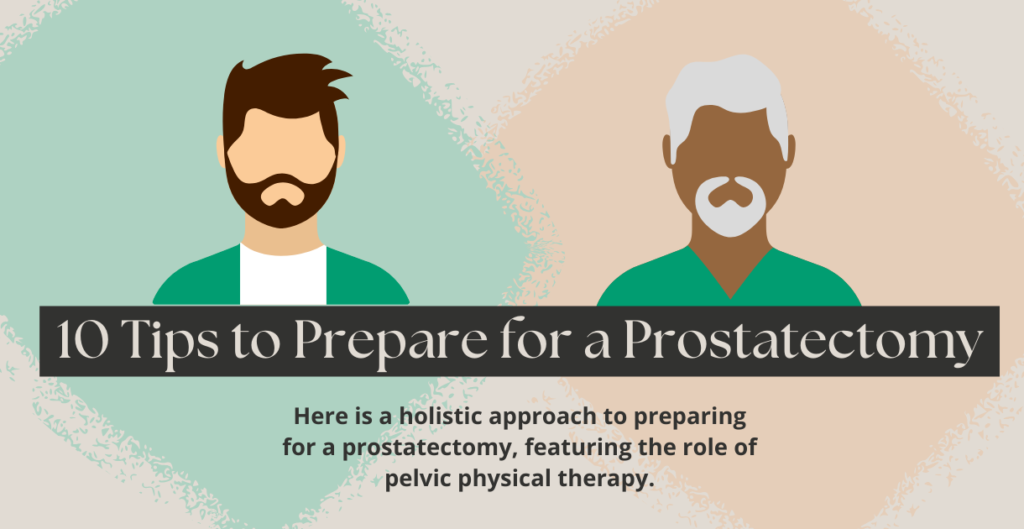
Embarking on the journey towards a prostatectomy involves careful preparation to optimize health before surgery, expedite recovery, and minimize potential complications. From a pelvic physical therapy perspective, this comprehensive guide outlines key aspects to consider in the preoperative phase. By integrating these strategies, patients may enhance surgical outcomes, reduce postoperative complications, and improve their overall quality of life.
1. Preoperative Education and Assessment:
The first step in the preparation process is to educate patients about the procedure, potential side effects, and postoperative expectations. A thorough assessment of pelvic floor function is conducted, focusing on strength, flexibility, and coordination.
2. Pelvic Floor Muscle Training (PFMT):
Initiating pelvic floor muscle exercises is crucial to strengthening and increasing awareness of these muscles. Patients are taught proper contraction and relaxation techniques, and regular PFMT sessions leading up to surgery are encouraged to enhance muscle tone and control.
3. Bladder Training:
To improve bladder control and reduce urinary incontinence post-surgery, patients are instructed on bladder training techniques. Timed voiding and urge suppression exercises are practiced to optimize bladder function.
4. Bowel Management:
Addressing any bowel dysfunction before surgery involves dietary modifications, adjustments to fiber intake, and bowel habit training. Adequate hydration and fiber intake are emphasized to prevent constipation, which can exacerbate pelvic floor issues.
5. Mobility and Flexibility Exercises:
Prescribing exercises to improve pelvic mobility and flexibility aids in post-surgery recovery. Stretching routines targeting the hip flexors, adductors, and lower back alleviate tension in the pelvic region.
6. Breathing and Relaxation Techniques:
Deep breathing and relaxation exercises are taught to reduce pelvic floor tension and promote overall relaxation. Mindfulness techniques are encouraged to manage stress and anxiety associated with the upcoming surgery.
7. Posture and Body Mechanics Training:
Emphasizing proper posture and body mechanics minimizes strain on pelvic floor muscles during daily activities. Guidance on lifting techniques and movement patterns protects the pelvic region.
8. Pelvic Pain Management:
Existing pelvic pain is addressed through manual therapy techniques, such as myofascial release and trigger point therapy. Modalities like heat therapy or TENS are utilized to alleviate discomfort.
9. Nutritional Counseling:
Patients receive nutritional guidance to support overall health and healing. The importance of consuming foods rich in antioxidants, vitamins, and minerals is discussed. Maintaining a healthy weight and avoiding excessive alcohol and caffeine intake, which can exacerbate urinary symptoms, are emphasized.
10. Continued Support and Monitoring:
Ongoing support and monitoring are provided throughout the preoperative and postoperative phases. Treatment plans are adjusted based on the patient’s progress and any emerging concerns.
Integrating pelvic physical therapy into the preoperative preparation for prostatectomy is a valuable approach. A comprehensive and coordinated patient care strategy can be implemented by collaborating closely with the surgical team. This holistic approach not only prepares individuals for surgery but also sets the foundation for a smoother recovery and an improved quality of life after prostatectomy.


Recent Comments